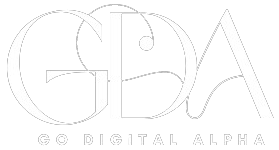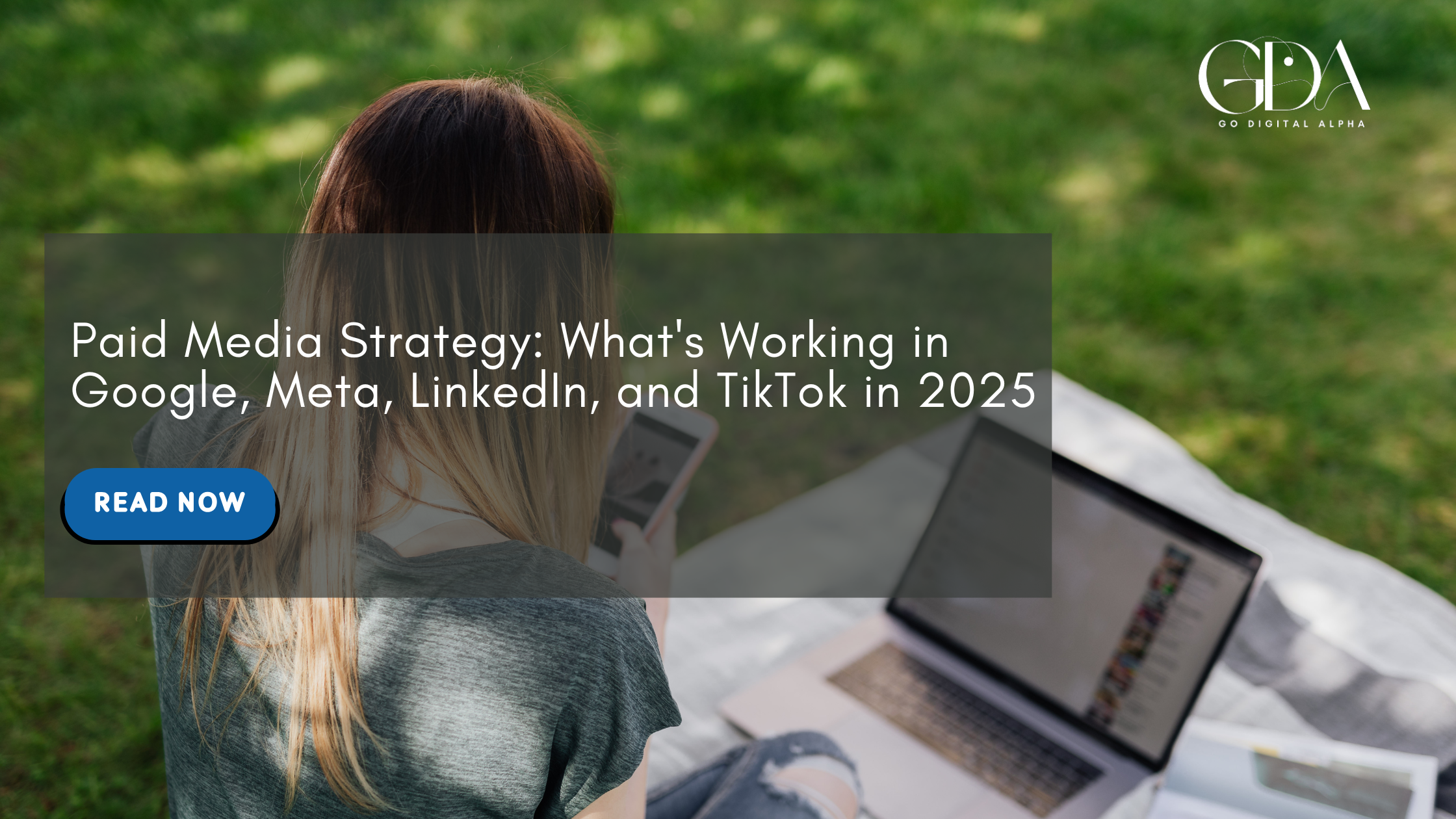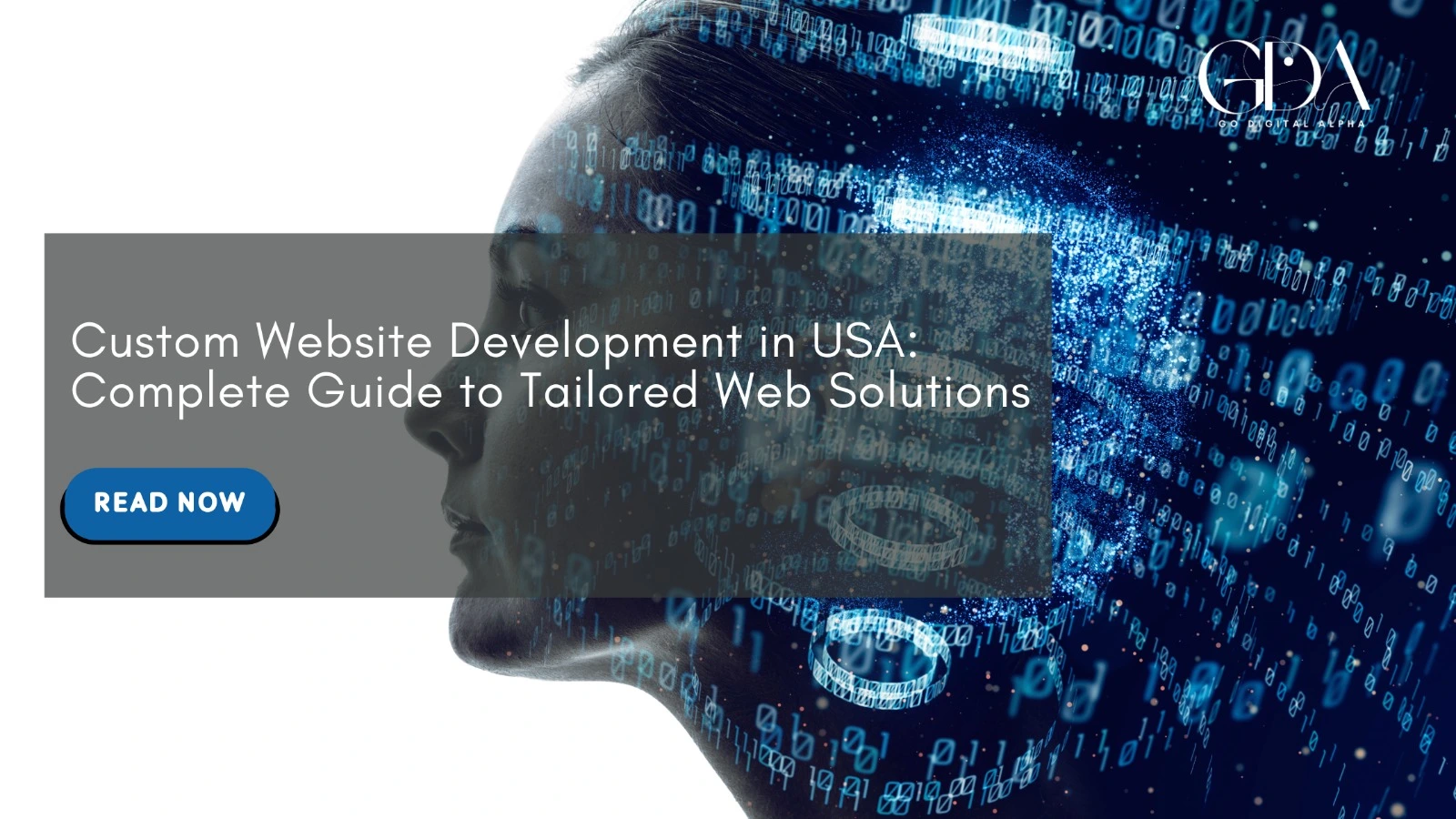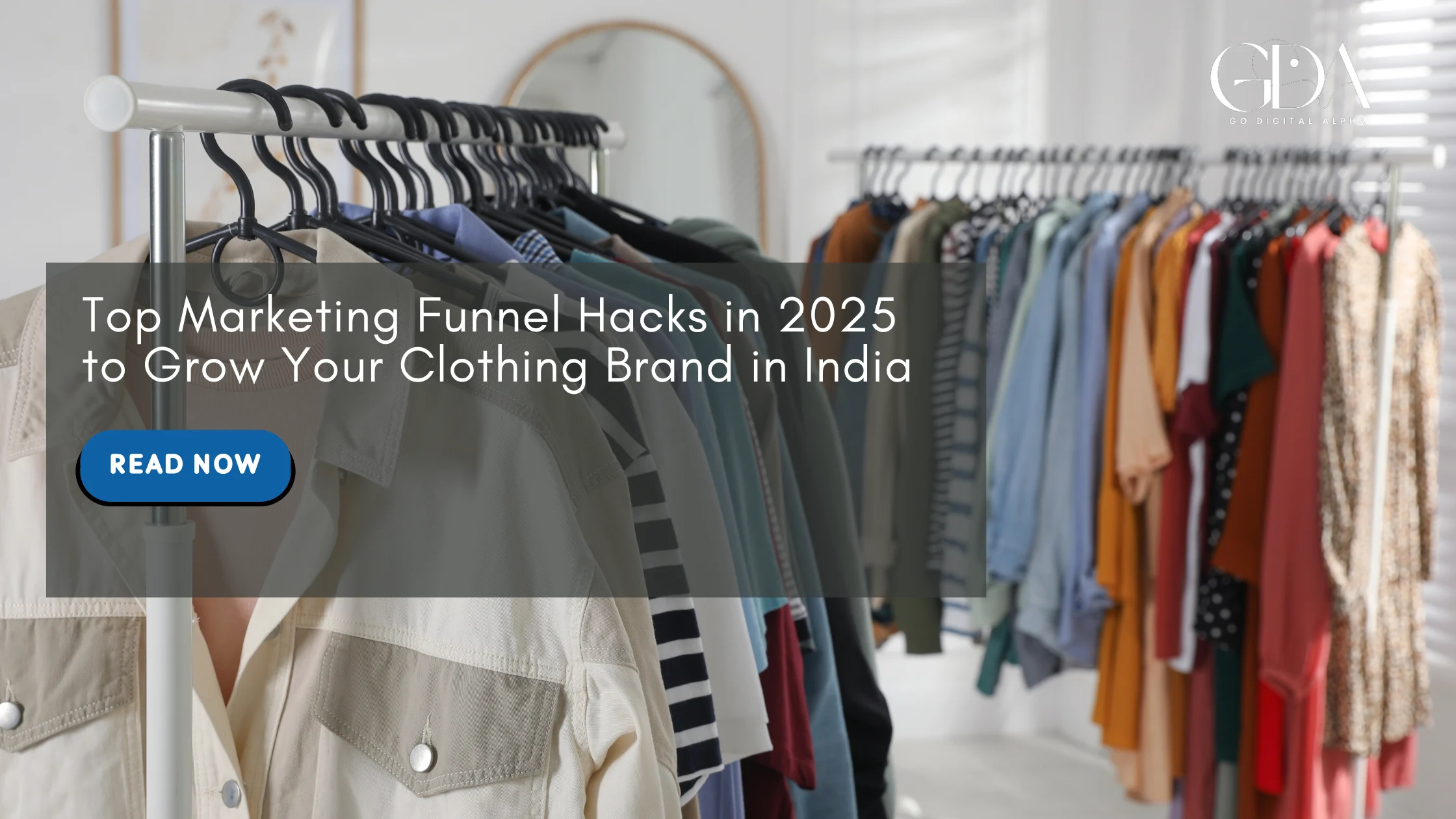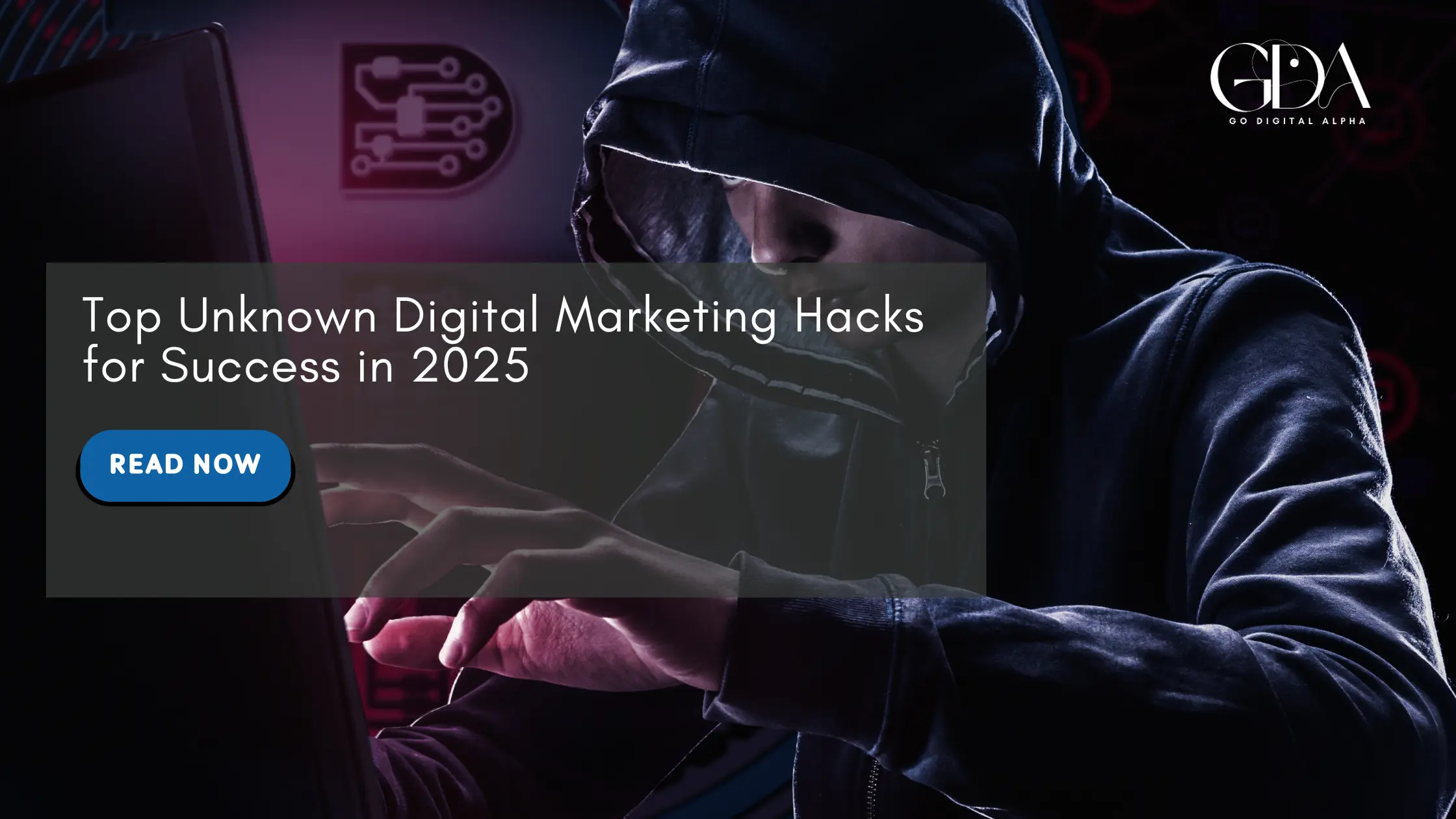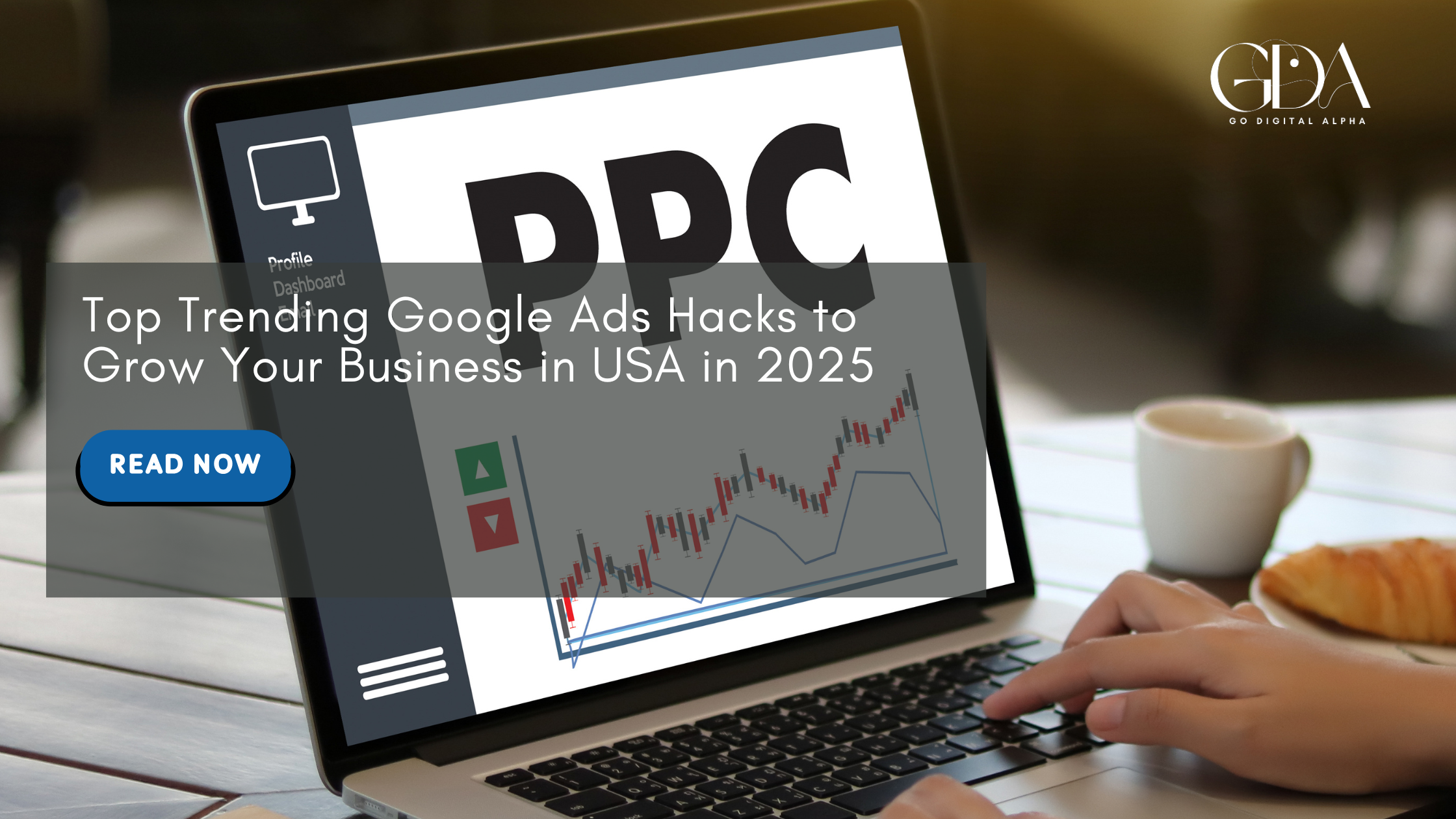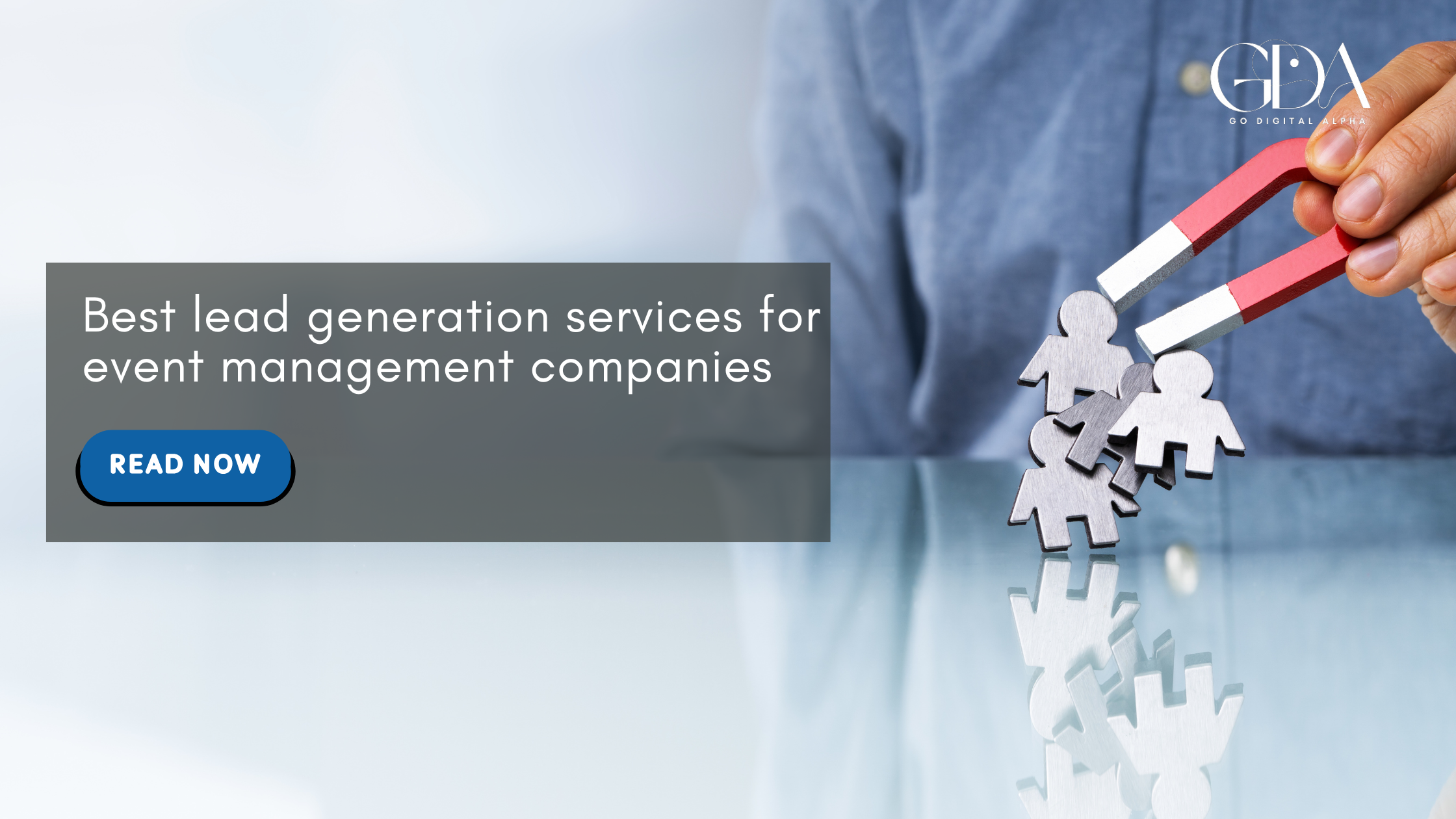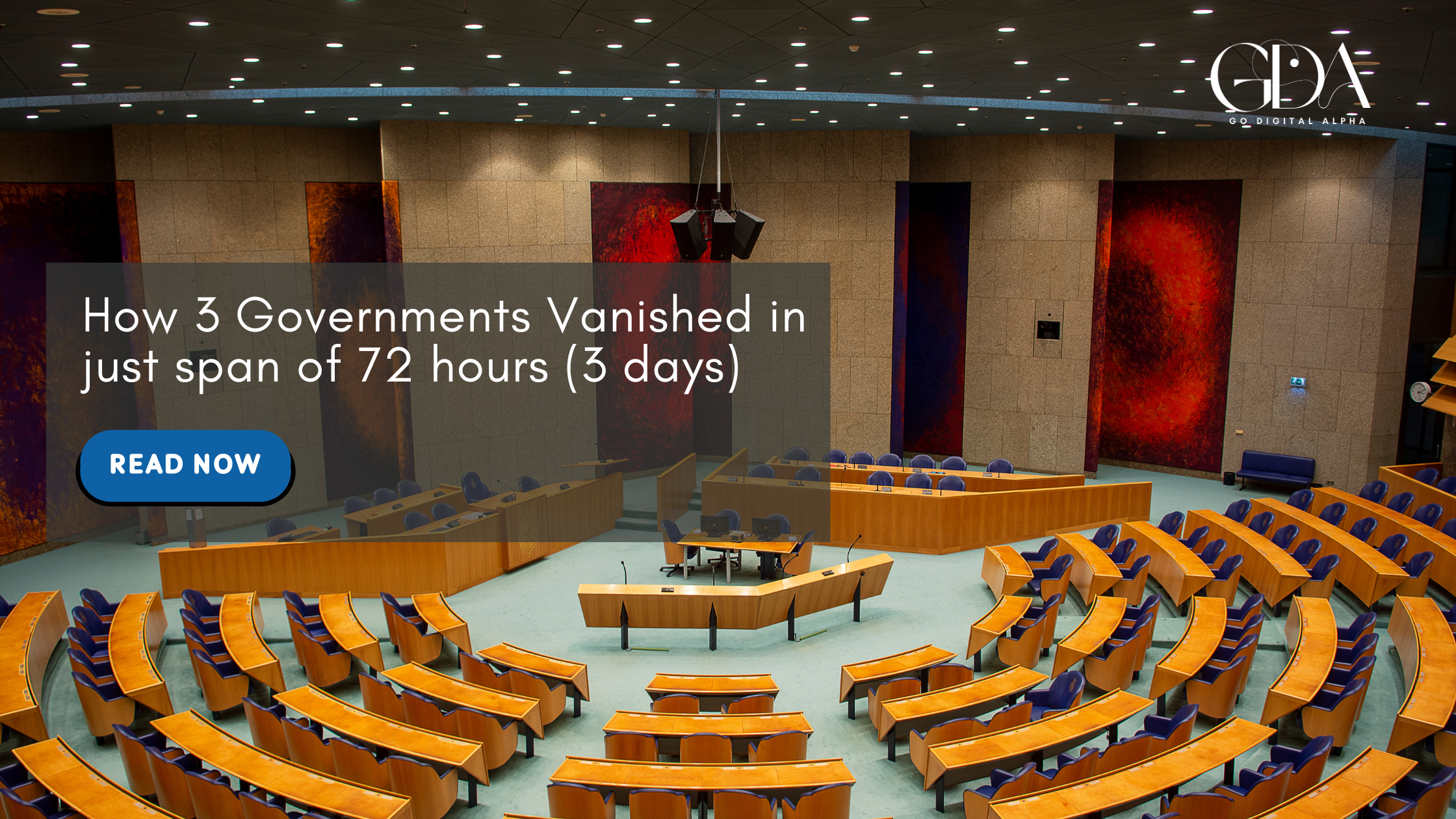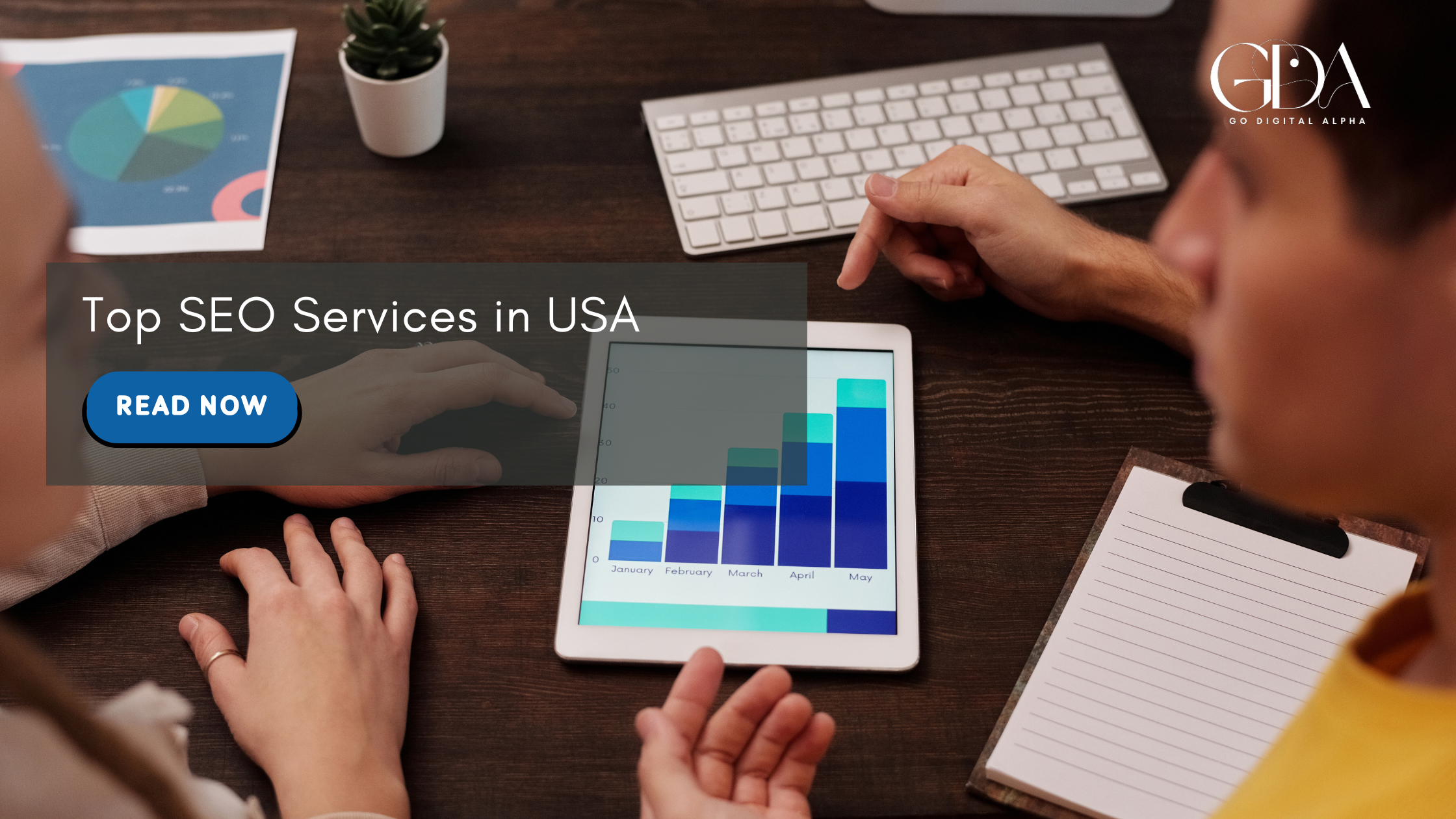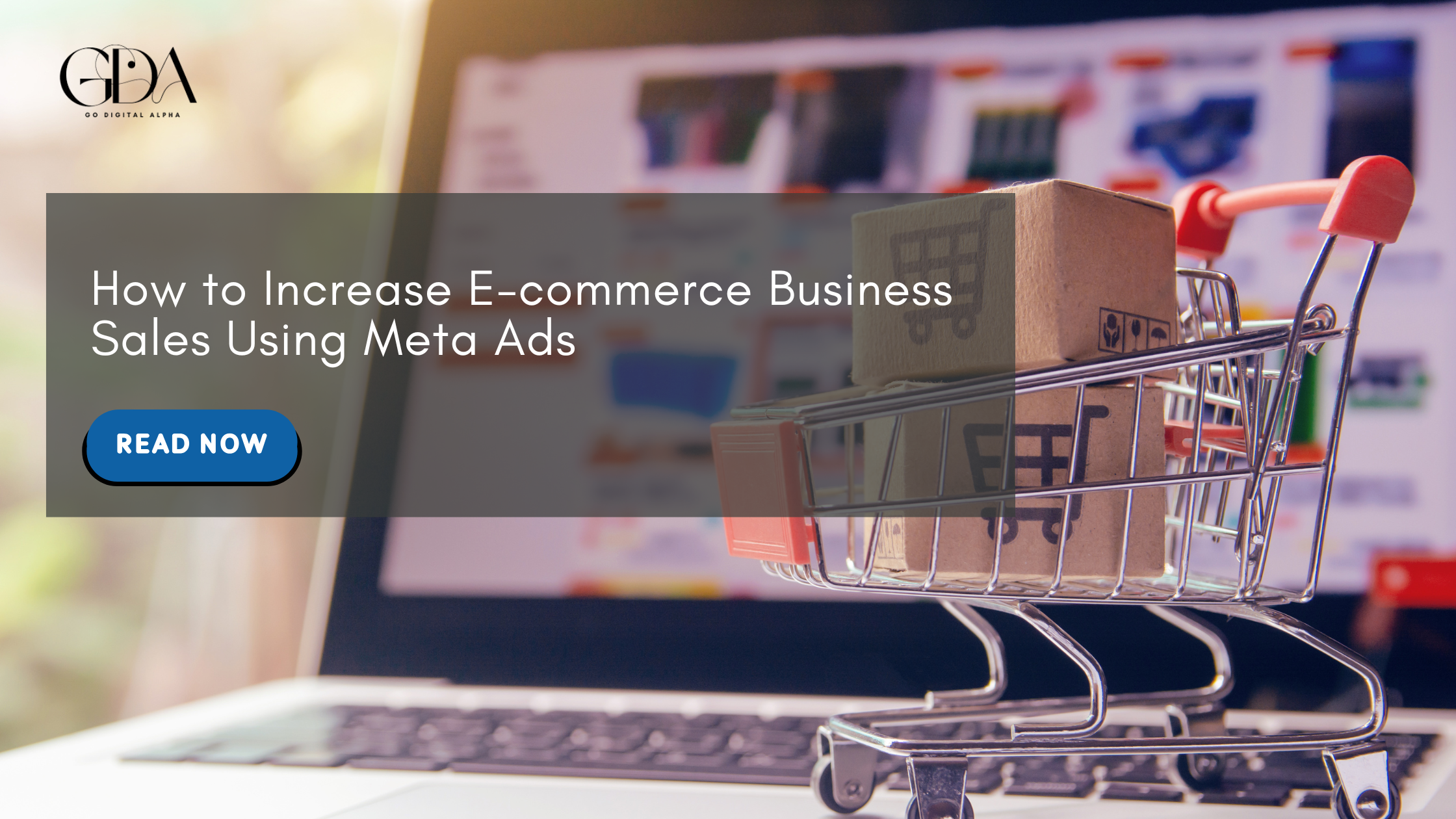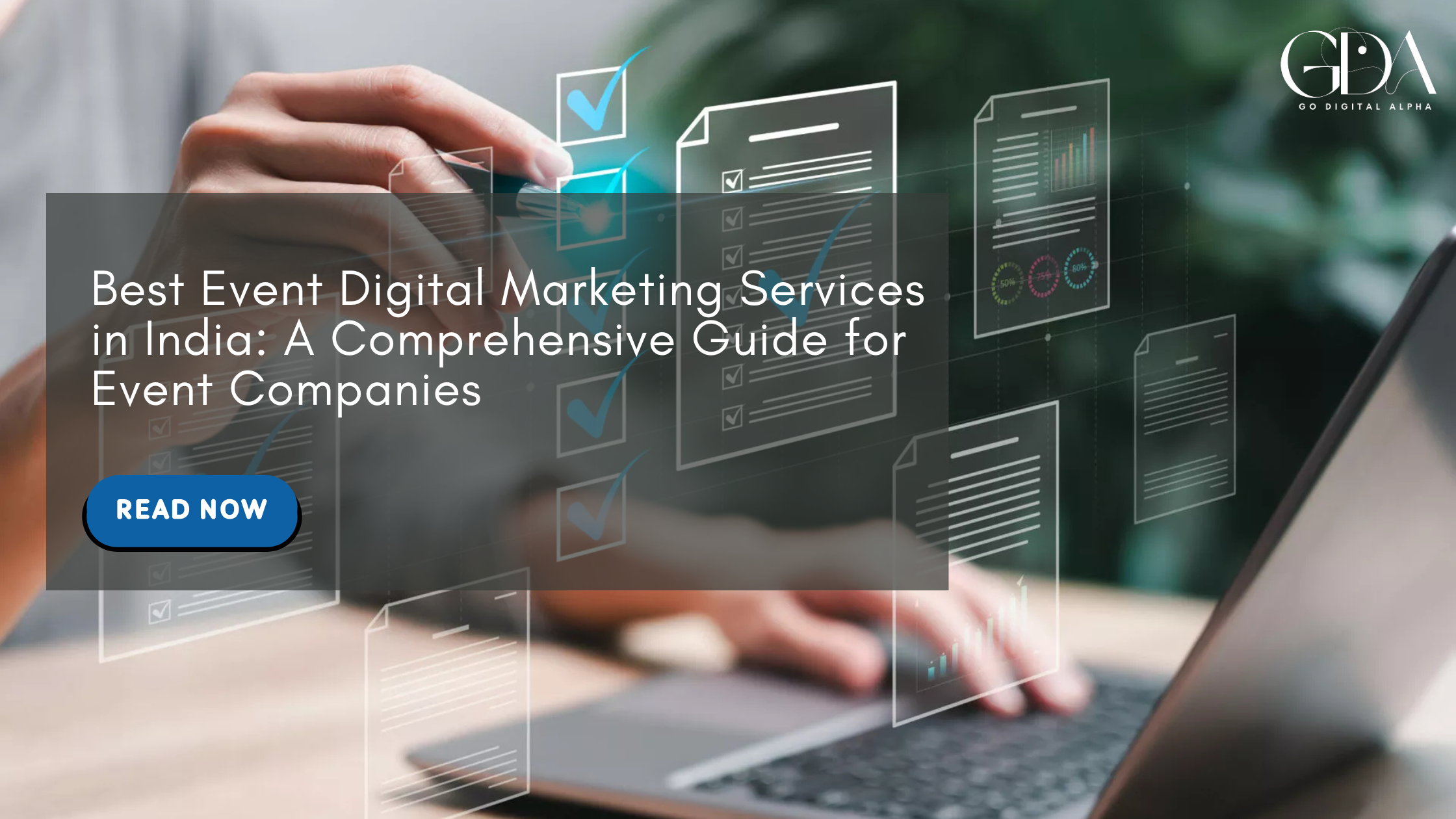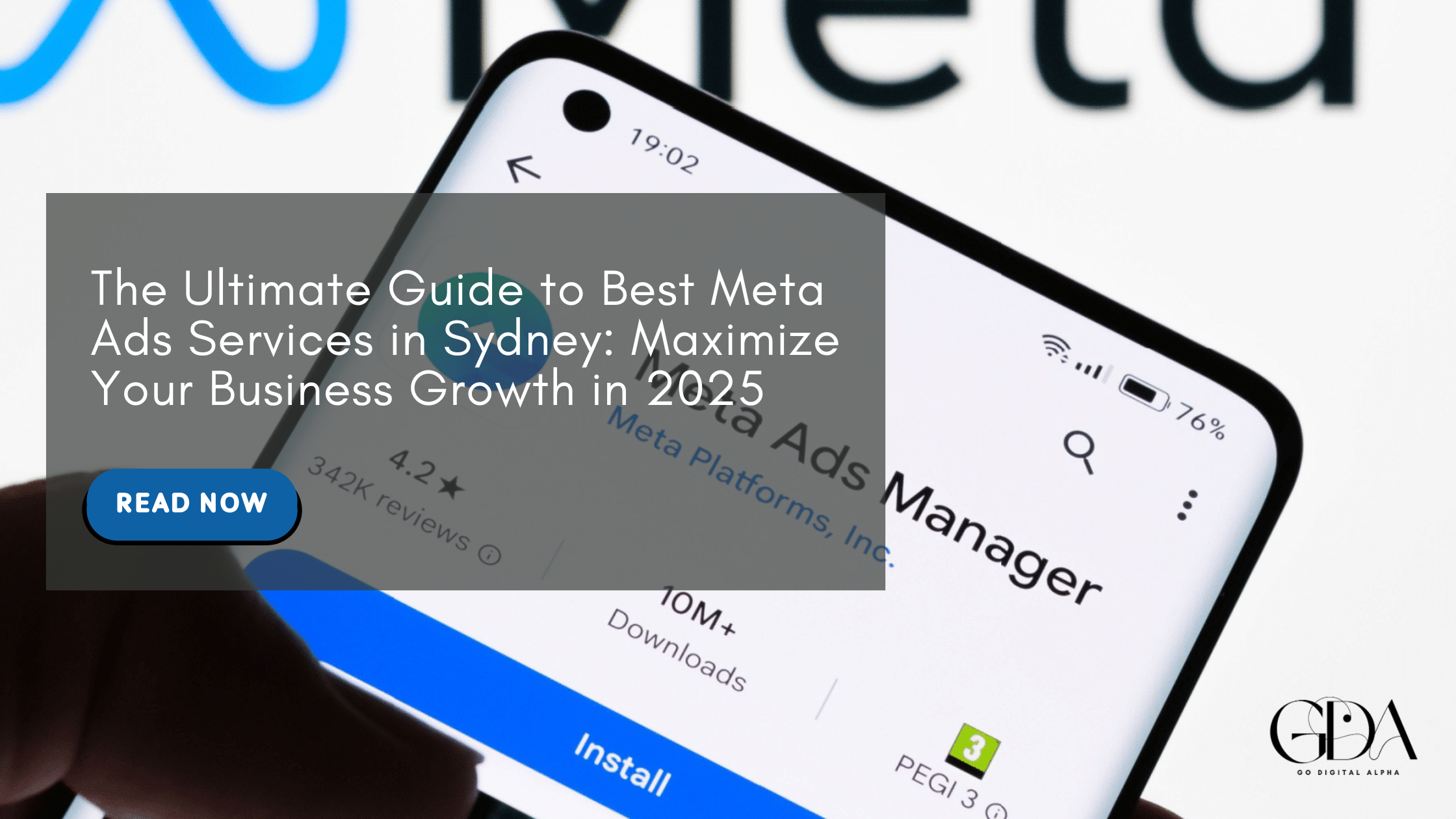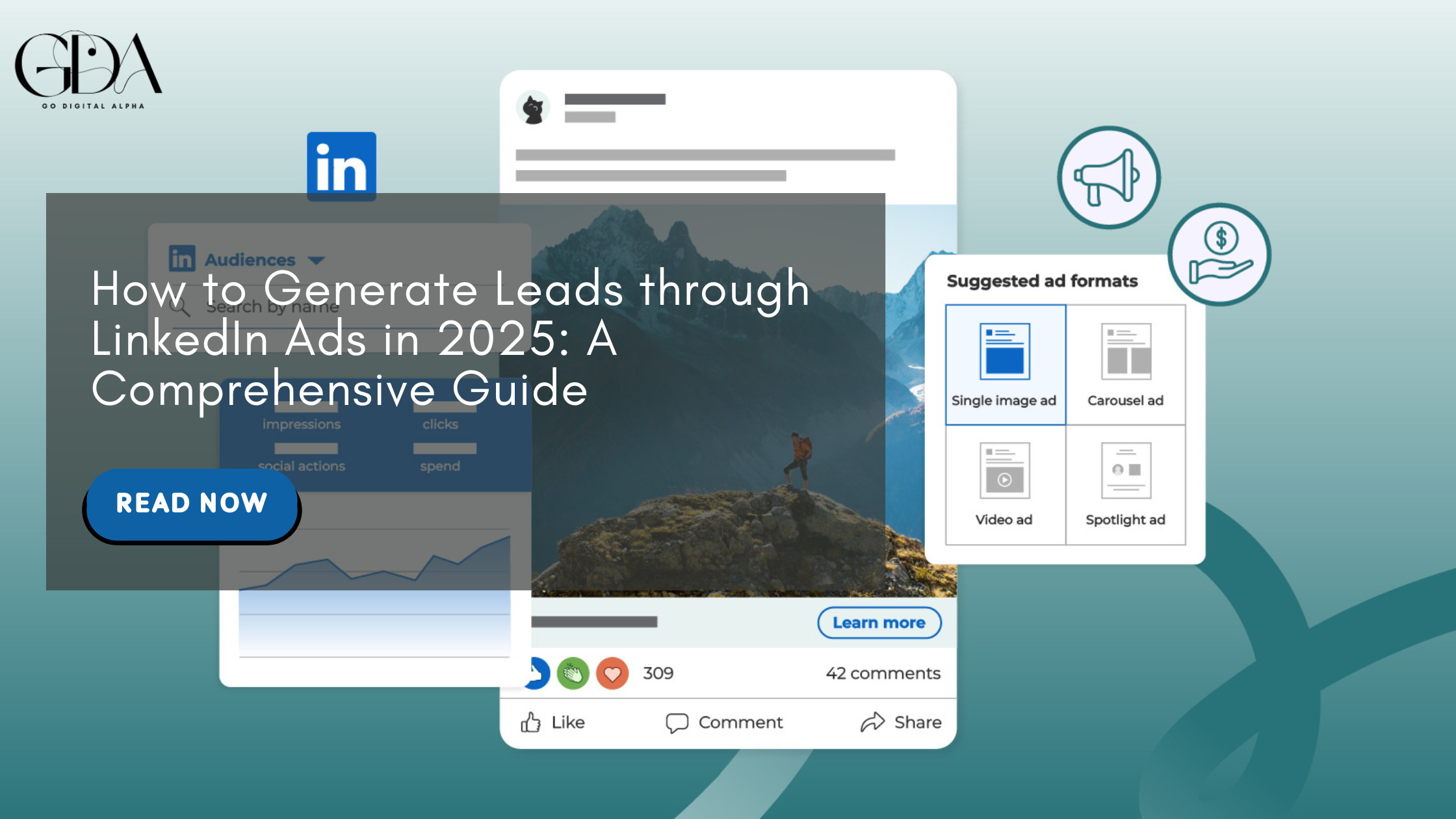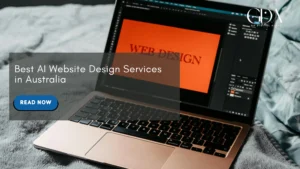Discover the Top Email Marketing Hacks in 2025 to boost open rates, drive engagement, and maximize conversions. Learn cutting-edge strategies and tools for smarter campaigns.
Top Email Marketing Hacks in 2025: Free Strategies to Skyrocket Your Business Leads
- Homepage
- Insights
- Top Email Marketing Hacks in 2025
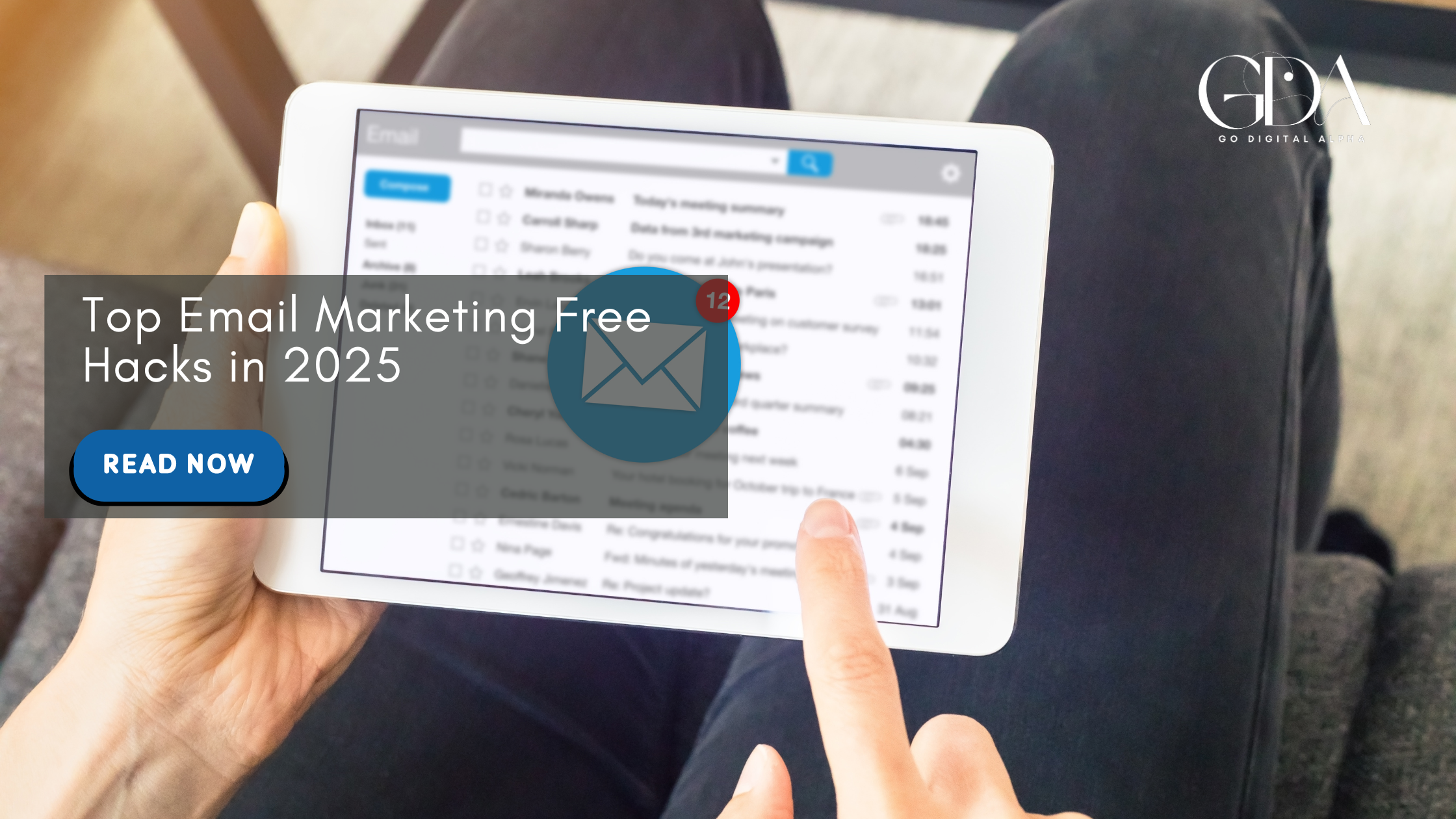
Email marketing continues to dominate as the single most profitable channel in digital marketing, with an impressive return on investment of $42 for every $1 spent. Despite the rise of social media and newer marketing channels, email remains the preferred communication method for 4.3 billion users worldwide. In 2025, email marketing isn’t just alive—it’s thriving, evolving with smarter automation, better personalization, and more sophisticated deliverability strategies.
If you’ve been struggling with low open rates, emails landing in spam, or simply not generating enough business leads, this comprehensive guide will change everything. We’ve analyzed the top email marketing strategies from industry experts and distilled them into actionable, free hacks that you can implement today to transform your email campaigns into a lead-generation powerhouse.
Key Takeaways
Email Deliverability Hacks - Keep Your Emails Out of Spam
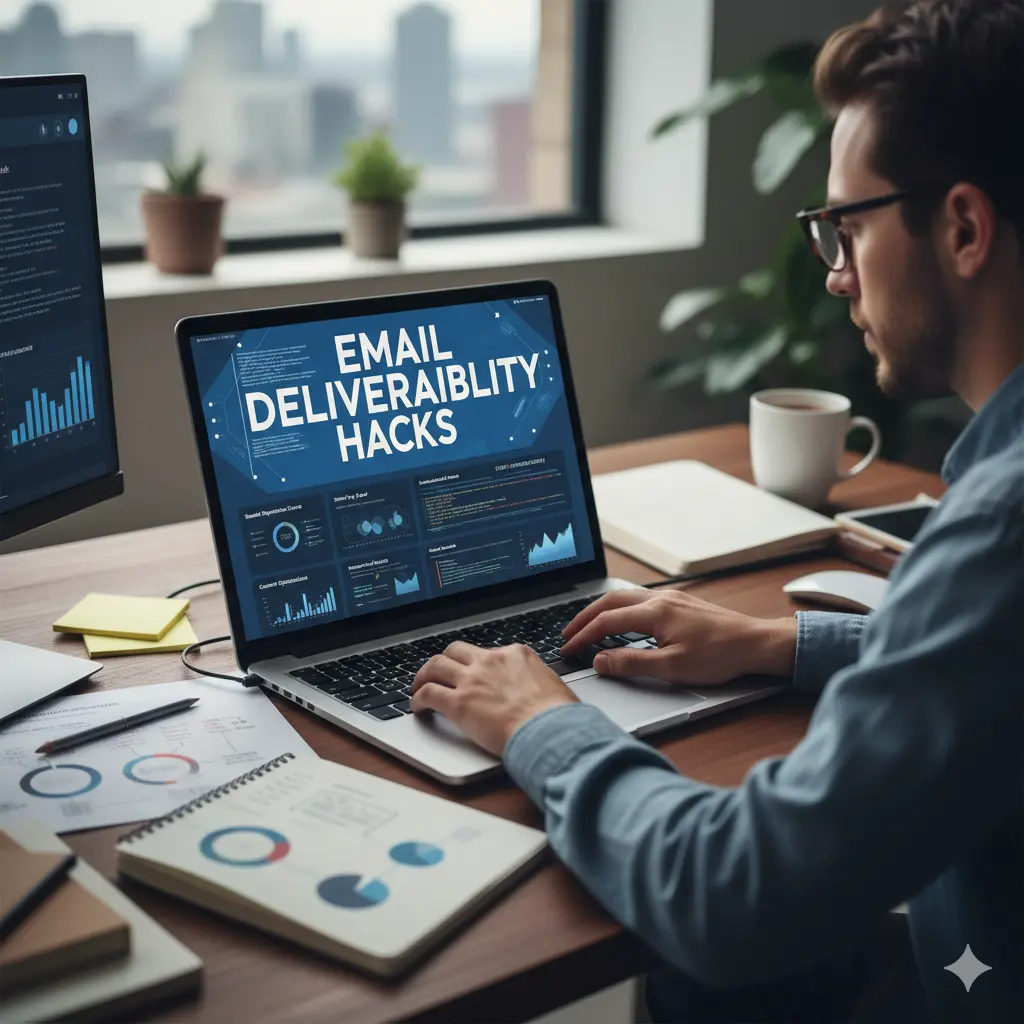
Getting your emails into the inbox is half the battle won. In 2025, deliverability has become more challenging with Yahoo, AT&T, and Microsoft implementing stricter filtering policies. Here are five critical hacks to ensure your emails never see the spam folder.
Use Subdomains to Protect Your Sender Reputation
One of the biggest mistakes businesses make is sending bulk emails directly from their main domain. Instead, create subdomains (like mg.yourdomain.com or lc.yourdomain.com) specifically for marketing emails. This isolation strategy protects your primary domain’s reputation if something goes wrong with your bulk sends. In 2025, it’s crucial to display the subdomain in your “from” address as well, not just use it for sending. This alignment prevents emails from looking suspicious to providers like Microsoft and Gmail.
Set Up SPF, DKIM, and DMARC Records Correctly

Proper email authentication is non-negotiable in 2025. SPF (Sender Policy Framework), DKIM (DomainKeys Identified Mail), and DMARC (Domain-based Message Authentication, Reporting & Conformance) records prove to email providers that you’re a legitimate sender. The good news? Free tools like InboxIQ Domain Authentication Checker can verify your DNS records in seconds, showing you exactly what’s missing or misconfigured.
Clean Your Email Lists Regularly
Sending emails to invalid addresses is the fastest way to tank your deliverability. Before migrating lists to a new platform or launching campaigns, remove all bounced and unsubscribed contacts. Use free verification tools like NeverBounce or Kickbox to validate email addresses. Even better, tools like InboxIQ Contact Analyzer (a free Chrome extension) can break down your list by mailbox provider and identify unresolvable contacts that could damage your sender reputation.
Implement Email Warm-Up Workflows

For new domains or those with damaged reputations, warming up is essential. Skip third-party warming tools and build your own workflow. Start by identifying your most engaged subscribers (those who opened emails in the last 30-60 days). Create a simple 3-email sequence with clear calls-to-action and send them in drip mode starting with just 200-1,000 contacts per day. After the first week, if you’re achieving 40%+ open rates, under 2% bounce rates, and under 0.08% spam complaints, double your daily volume. This gradual approach builds trust with Internet Service Providers.
Track Engagement and Sunset Inactive Contacts
The most underrated deliverability hack is removing disengaged subscribers. Set up automated sunset workflows that identify contacts who haven’t engaged in 30-60 days (depending on your sending frequency). Send them a re-engagement sequence of 1-3 emails, and if they still don’t respond, remove them from your active list. This practice keeps your open rates high and signals to email providers that you’re sending to engaged audiences only.
Building Your Email List for Free

You can’t run successful email campaigns without subscribers. Here’s how to build a quality email list without spending a dime.
Create Irresistible Lead Magnets
The days of “Sign up for our newsletter” are over. People need a compelling reason to share their email address. Lead magnets—free resources offered in exchange for emails—are your secret weapon. The most effective lead magnets include 5-page checklists, short guides, cheat sheets, 5-day email courses, exclusive videos, discount codes (for ecommerce), webinar access, free templates, or quick consultations.
The key is making your lead magnet valuable enough that people would normally pay for it. A B2B software company might offer a “Free 10-page industry trend report,” while a fitness brand could provide
a “Complete 30-Day Workout Plan PDF”. Make sure your lead magnet is easy to consume, delivers immediate value, and subtly positions your product as the solution.
Leverage Free Email Marketing Tools
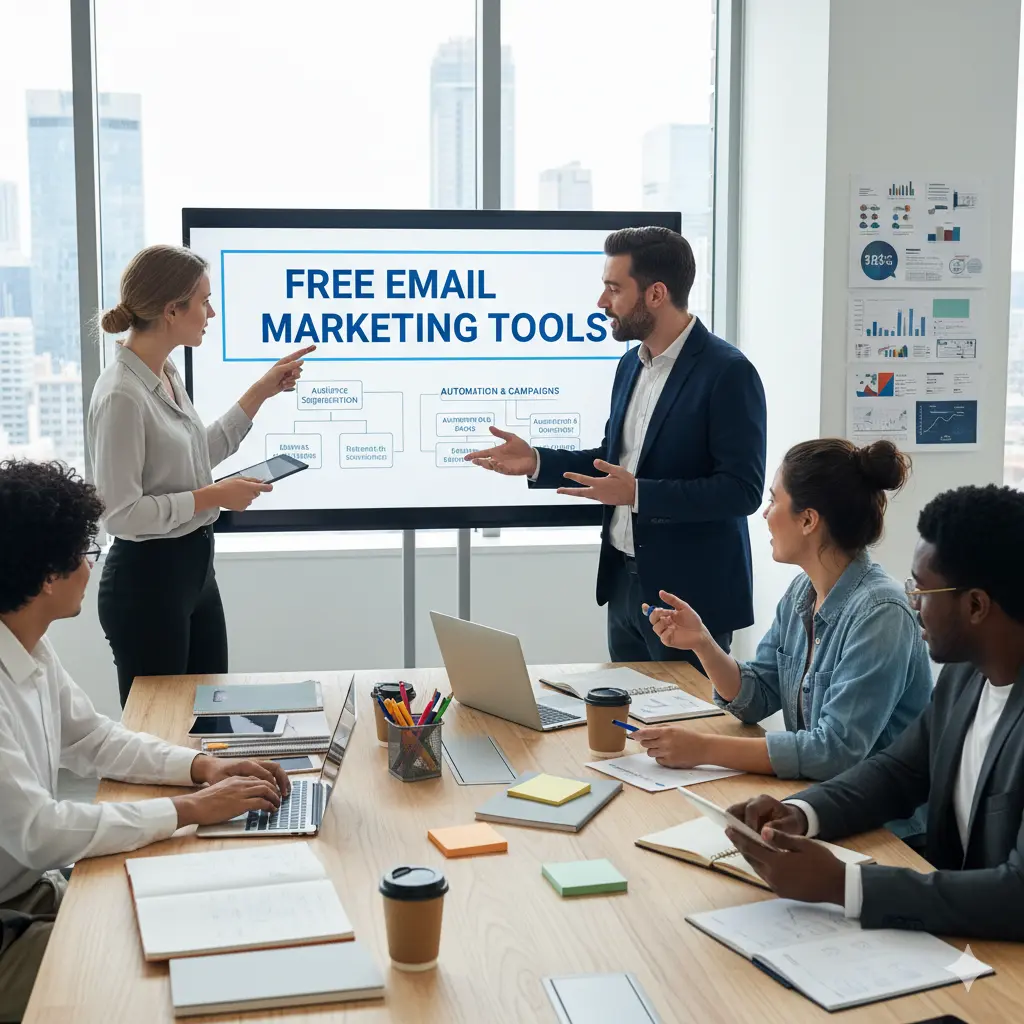
You don’t need expensive software to start. In 2025, several platforms offer generous free plans. MailerLite provides 500 subscribers and 12,000 emails per month completely free, with automation included. Brevo (formerly Sendinblue) offers up to 100,000 subscribers and 9,000 emails monthly with marketing automation. Mailchimp’s free plan covers 500 contacts and 1,000 emails per month. Sender allows 2,500 subscribers and 15,000 emails monthly with unlimited automations. For beautiful design focused emails, Flodesk offers unlimited contacts for a flat fee (with limited-time 50% discount).
Promote Your Opt-In Everywhere
Add newsletter signup forms on every high-traffic page of your website. Include checkboxes on contact forms, registration pages, and checkout processes. Add a newsletter link to your email signature—this subtle reminder reaches everyone you communicate with one-on-one. Promote your lead magnet on social media platforms. Use QR codes in physical locations if you have a brick-and-mortar business. The more touchpoints you create, the faster your list grows.
Use Quizzes and Webinars
Quizzes are a widely underused strategy for capturing emails. They’re playful, engaging, and can segment your audience automatically. An ecommerce store could create “What product is best for you?” while a nutritionist offers “What meal plan fits your lifestyle?”. Webinars work exceptionally well for complex B2B products. They create buzz, allow direct interaction, and the recordings become evergreen lead magnets.
Email Design and Optimization Hacks
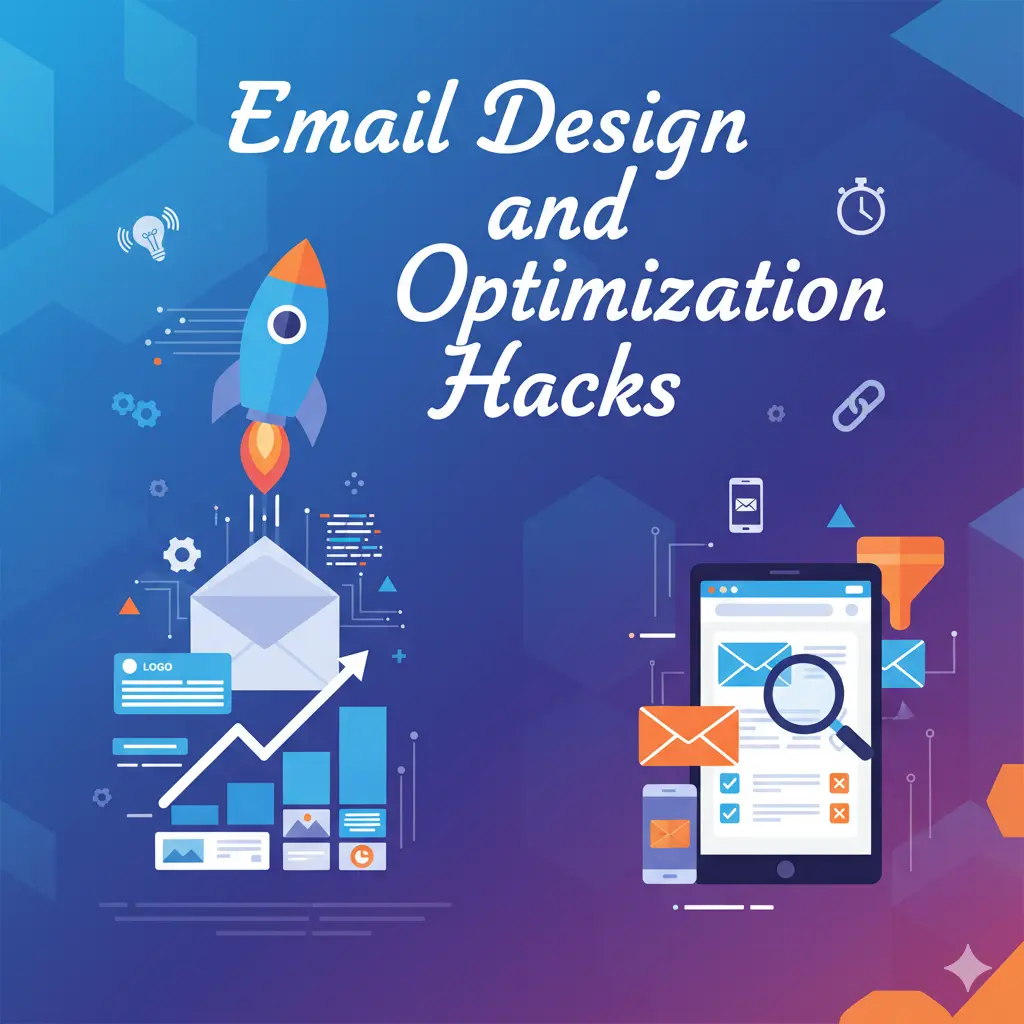
Beautiful, functional email design doesn’t require a designer or expensive software.
Show Discount Codes on Popups
This hack contradicts traditional advice but drives higher conversions. Instead of making subscribers check their inbox for a discount code, display it directly on the popup’s thank-you page. While this might reduce attributed email revenue (making agencies look less effective), it removes unnecessary friction and keeps users on-site, leading to higher actual conversion rates. The goal is total revenue, not just email attributed revenue.
Design Once, Reuse Forever
Stop redesigning emails from scratch every time. Create 2-3 master templates that reflect your brand, then duplicate and modify them. Flodesk and most email platforms let you save templates as favorites. Simply update the content, images, and links while keeping the structure consistent. This ensures brand consistency, saves hours of work, and maintains a professional appearance across all campaigns.
Optimize for Mobile Readers

Over 50% of emails are opened on mobile devices. Always preview your emails on mobile before sending. Keep paragraphs short (3-4 lines maximum), use larger font sizes (at least 14px), make buttons big and tappable (minimum 44px height), and add padding to ensure text doesn’t stretch edge-to-edge. Avoid stacking multiple images vertically, as this slows loading times. When you design mobile-first, desktop users benefit automatically.
Keep Design Clean and Focused
Cluttered emails kill conversions. Use clean layouts with plenty of white space. Your buttons should stand out clearly. Text must be easily readable. Every email should have one primary goal and one clear call-to action. If you’re promoting three products, asking for webinar signups, and requesting feedback all in one email, you’re overwhelming readers. Simplicity wins every time.
Personalization and Segmentation Strategies

Generic mass emails are dead. In 2025, personalization and segmentation are what separate successful campaigns from ignored ones.
Use Segments Instead of Endless Tags
If you’re coming from platforms that use tagging systems, segments are a game-changer. Think of segments as organized buckets: potential clients, current clients, newsletter readers, past clients, etc. Instead of manually tagging people with dozens of confusing labels, create clear entry points where subscribers are automatically placed into the right segment based on their actions. This keeps your list organized and ensures you’re always talking to the right people.
Collect Zero-Party Data at Signup
Ask 1-2 simple questions on your signup form to collect zero-party data—information customers voluntarily share. A skincare brand might ask “What’s your biggest concern: acne, dryness, or anti-aging?”. A supplement brand could ask “What are you looking for: energy, immunity, or relaxation?”. This allows
you to personalize welcome sequences and send product recommendations that actually match their needs, dramatically increasing engagement and conversion rates.
Personalize Beyond First Names
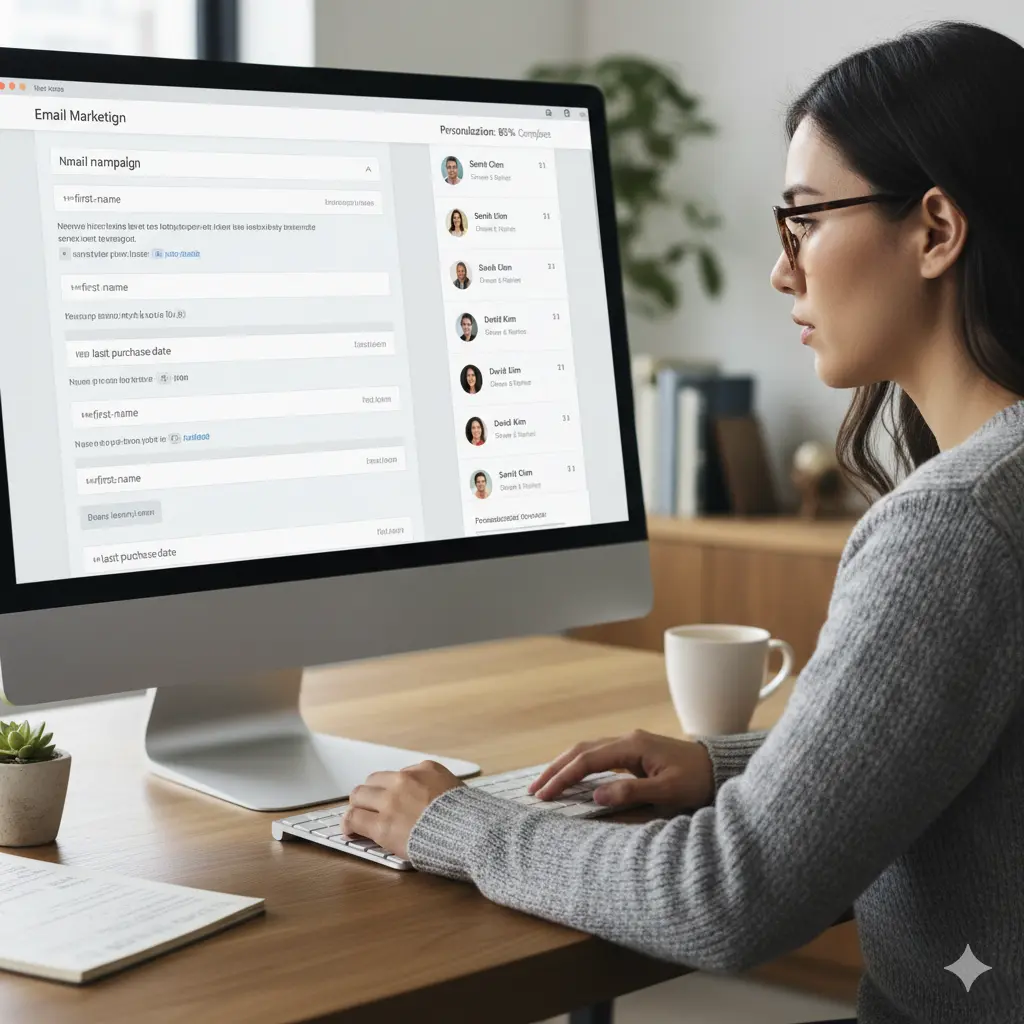
Everyone uses first names now—it’s no longer impressive. True personalization references past behavior, location, purchase history, and preferences. If a customer frequently buys running gear, send them emails about running shoes and fitness apparel, not random promotions. Use your email platform’s data and analytics to track what subscribers browse, buy, and ignore, then tailor content accordingly.
Segment Your List by Engagement Level
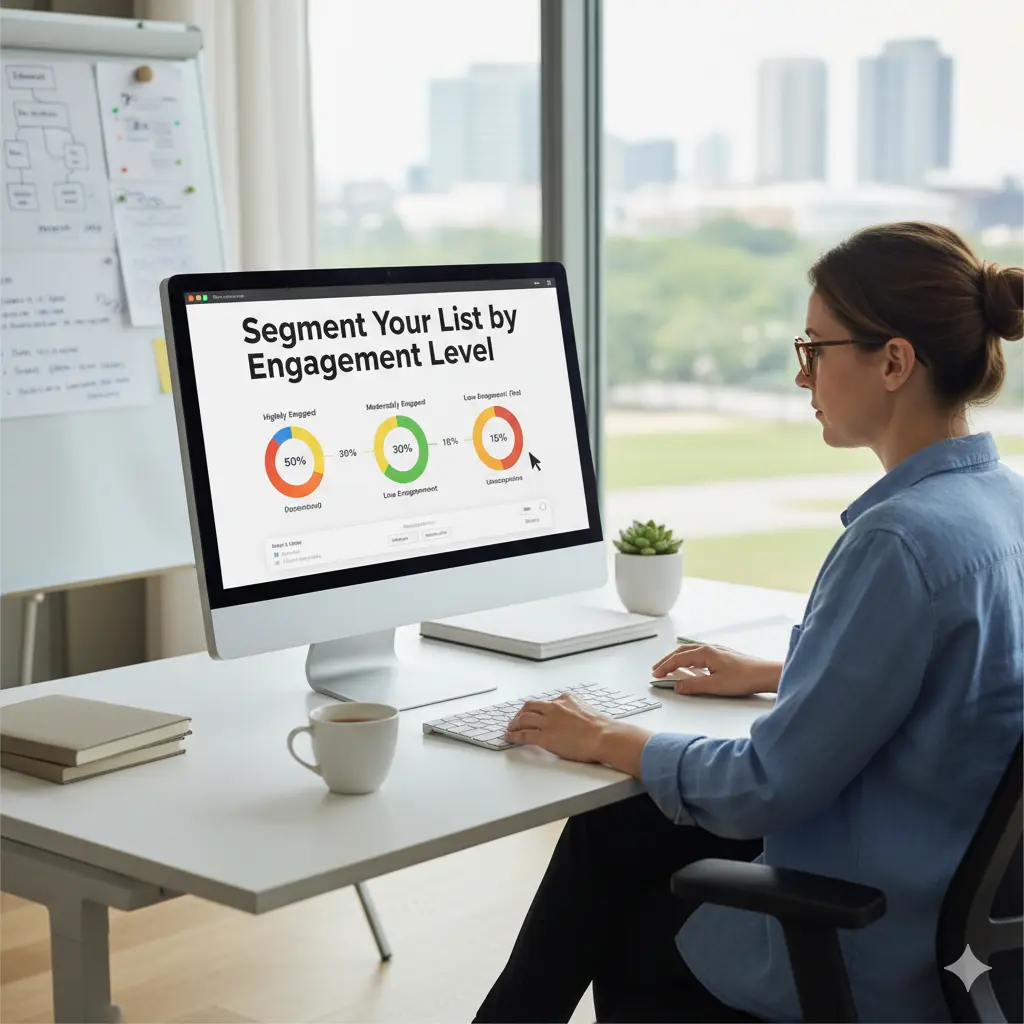
Not all subscribers are equal. Create segments for highly engaged subscribers (opened emails in last 30 days), moderately engaged (31-60 days), and disengaged (60+ days without opening). Send your best offers to highly engaged subscribers. Try re-engagement campaigns for the moderately engaged. Apply sunset policies to the disengaged. This ensures you’re not wasting premium content on people who aren’t paying attention.
Email Copywriting Hacks That Get Responses
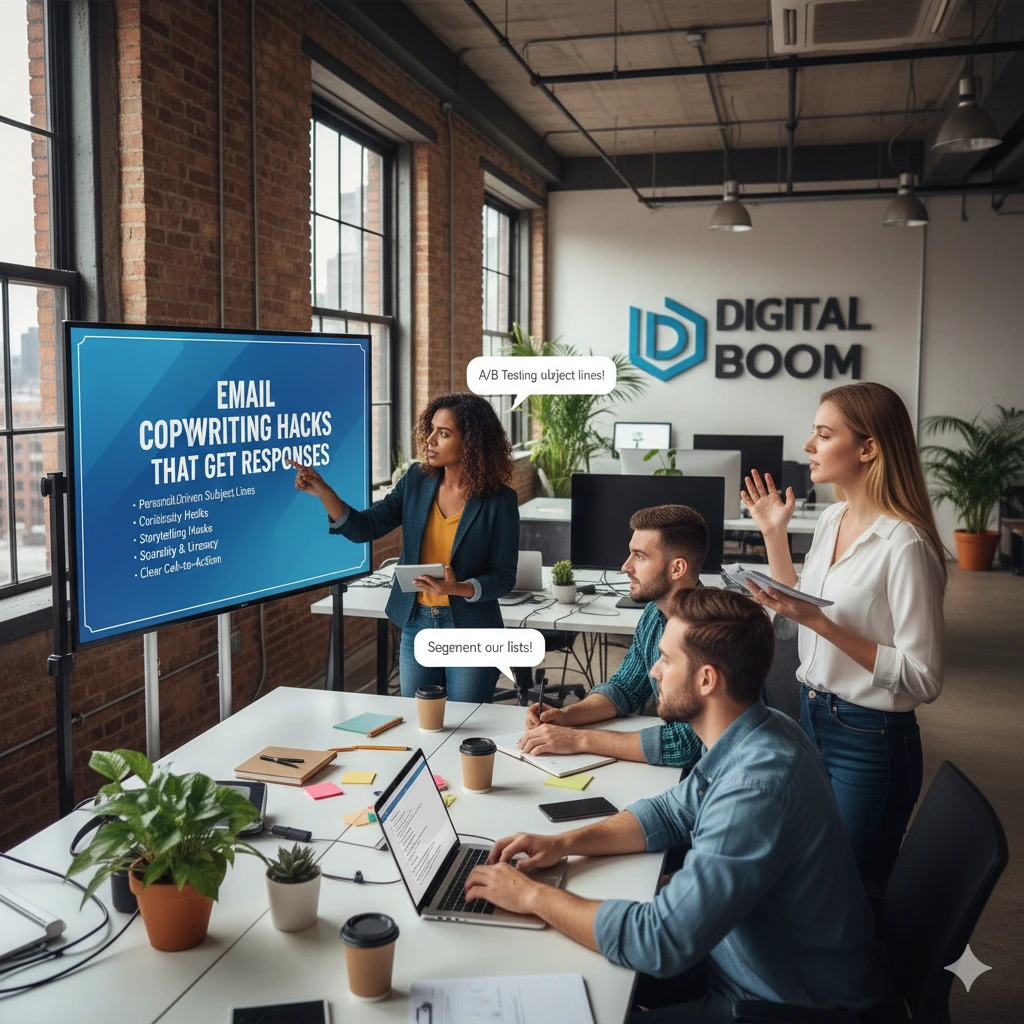
Great copy is the difference between emails that convert and emails that get deleted.
Master the Subject Line Formula
Your subject line needs to be human, peek curiosity, and stay between 1-3 words. Examples that work: “[First Name]…” “Quick thought” “[First Name], worth it?” “Strange question” “This surprised me” “Your call”. These don’t scream “marketing email.” They feel like messages from a colleague or friend, which dramatically increases open rates. A/B test different subject lines relentlessly—even a 10% improvement in open rates translates to significant revenue when scaled.
Write Personalized First Lines

Your opening line must pattern-interrupt and build immediate relevance. Examples: “We just worked with [Competitor Name] to increase their booked calls by 27%. Wanted to share what we learned”. “Saw [Company Name] was hiring for a sales role—usually means demand is outpacing bandwidth”. “Most agencies don’t realize they’re leaving 30-40% of potential leads untouched”. “I’ll keep this shorter than a TikTok. Your time’s worth more than reading a stranger’s pitch”. These hooks make readers think “This person actually knows my situation.”
Address Problems Directly
After your personalized opener, surface their pain points. “Most agencies I talk to feel like leads are unpredictable—one month they’re swamped, the next it’s crickets”. “A lot of people tell me referrals alone aren’t enough anymore. It feels like waiting for luck”. “Most founders I talk to feel stuck. Amazing product but growth depends on outbound that rarely sticks”. This problem awareness shows empathy and establishes that you understand their frustrations, building trust before you ask for anything.
Offer Value, Not Meetings

The biggest mistake in cold emails is asking for calls or meetings too early. Instead, offer something valuable for free: “Want me to send you a list of 100 leads that fit your exact ICP?”. “Can I share an email sequence that’s booking 20% more calls right now?”. “Would it be helpful if I shared a competitor analysis showing where you’re losing deals?”. “Can I send you five ad creatives that are crushing it in your niche?”. When people raise their hands for free value, they’re signaling interest in your solution. That’s when you move them toward a call.
Keep Emails Concise and Scannable
Busy professionals won’t read lengthy emails. Keep paragraphs short (2-3 sentences maximum). Use bullet points when listing features or benefits. Get to the point immediately—no lengthy introductions. State the benefit, make the offer, or ask an engaging question right upfront. Your entire email should be readable in under 30 seconds.
Automation Hacks to Save Time

Smart automation lets you work once and benefit forever.
Send First Two Welcome Emails Within 24 Hours
The first 24 hours after signup are crucial—excitement and engagement are at their peak. Most brands space emails too far apart, leading to drop-off. Best practice: send email #1 immediately (welcome, introduce brand, highlight the discount/incentive), and email #2 between 12-24 hours later (showcase best sellers, social proof, create urgency). After this window, engagement naturally declines, so maximize it while you have their attention.
Build Automatic Welcome Sequences
Most businesses send one welcome email and stop. Instead, create a 3-5 email sequence that runs automatically. Email 1: Deliver the promised lead magnet or discount. Email 2: Share your story and explain how you help people. Email 3: Highlight your best resource (blog post, podcast episode, case study). Email 4: Invite them to connect on social media. Email 5 (optional): Direct pitch to work together.
Set this up once in your email platform, and every new subscriber gets the same nurturing experience automatically.
Repurpose Best-Performing Campaigns

Don’t reinvent the wheel. Look at your highest-converting campaigns from the past year. If a social proof email performed exceptionally well, integrate it into your welcome series as email #3. If an educational email drove great engagement, slot it into your nurture sequence. This ensures your automated flows are already optimized for conversions without creating everything from scratch.
Create Automated Sunset Workflows
Set up workflows that automatically identify subscribers who haven’t engaged in 30-60 days. Move them to a re-engagement sequence: “We noticed you haven’t opened our emails lately. What would you like to see from us?” or “Last chance to stay on our list—here’s our best content”. If they don’t engage with 2-3 re-engagement emails, automatically remove them from your main list or mark them “do not disturb”. This keeps your list healthy and your deliverability strong.
Analytics and Testing Strategies

Data-driven email marketing consistently outperforms guesswork.
A/B Test Your First Welcome Email Relentlessly
Your first welcome email has the highest open and click-through rates by far—small improvements here have massive revenue impact. Test different subject lines (easiest to implement), CTA placement (try buttons above the fold), offer framing (different ways to phrase your discount or value proposition), and email length (short vs. detailed). Even a 5-10% improvement in conversion on this email scales across all new subscribers.
Track the Right Metrics
Focus on open rates (aim for 35-50%), click rates (target 5-10%), bounce rates (keep under 2%), spam complaint rates (under 0.08%), and unsubscribe rates (under 1%). For warm-up emails specifically, target 40%+ open rates. Use your email platform’s built-in analytics—most free plans include basic reporting. Don’t obsess over vanity metrics; focus on metrics that directly impact revenue: clicks to product pages, add-to-cart rates from emails, and actual purchases attributed to campaigns.
Use Analytics to Refine Strategy

Treat analytics as feedback, not just numbers. If emails with shorter subject lines consistently get higher open rates, make that your standard. If one type of content (like case studies) gets more clicks than others (like product features), create more of that content type. If emails sent Tuesday mornings perform better than Friday afternoons, adjust your sending schedule. Pick one metric to improve each month and experiment until you see results.
Don’t Ignore Engagement Timing
Pay attention to when your emails are opened. Most email platforms show you the hours and days with highest engagement. Schedule your campaigns during these peak windows. For B2B audiences, Tuesday Thursday between 9-11 AM typically performs best. For consumer audiences, early evenings and weekends often see higher engagement. Test different times for your specific audience.
Free Tools for Email Marketing in 2025
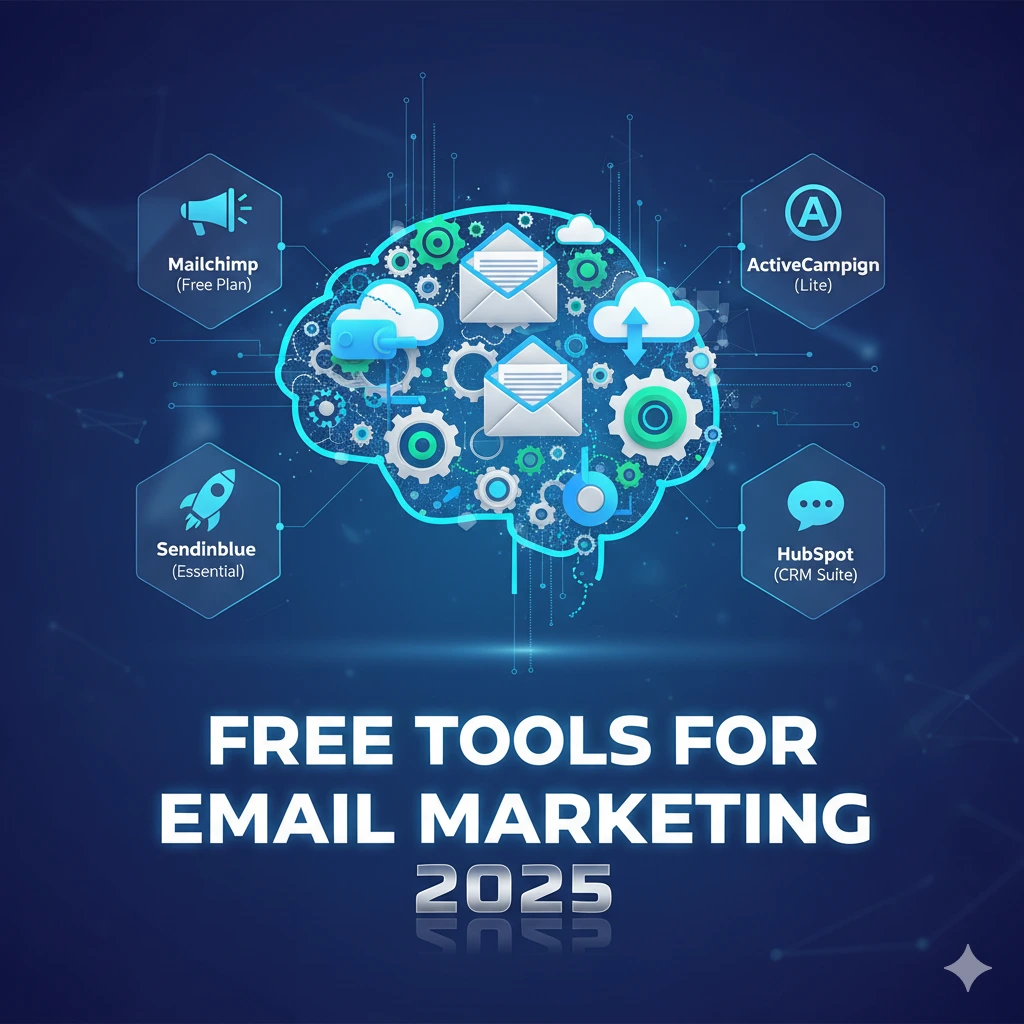
You don’t need expensive enterprise software to succeed.
MailerLite offers 500 subscribers and 12,000 emails per month completely free, with marketing automation, landing pages, pop-up forms, and A/B testing included. The interface is clean and beginner friendly, making it perfect for small businesses just starting out.
Brevo (formerly Sendinblue) provides up to 100,000 subscribers and 9,000 emails monthly (with a 300/day limit), plus SMS marketing, live chat, and sophisticated automation workflows—all on their free plan. This is ideal for businesses that need multichannel marketing.
Mailchimp remains popular with its free plan covering 500 contacts and 1,000 emails per month, including basic automation, a drag-and-drop builder, and lots of templates. It’s especially good for beginners familiar with the brand.
Sender allows 2,500 subscribers and 15,000 emails monthly with unlimited automations, making it one of the most generous free plans available. It’s simple, no-nonsense, and includes A/B testing even on the free tier.
GetResponse offers 500 subscribers and 2,500 emails monthly, with a website builder and landing page creator included—great if you need an all-in-one solution.
Omnisend provides advanced features like landing pages, website tracking, and marketing automation even on small free plans, making it perfect for ecommerce businesses.
Flodesk takes a different approach with unlimited subscribers for a flat monthly fee (currently offering 50% off first year). If you value beautiful design and simplicity, it’s worth the small investment.
Free Chrome Extensions: InboxIQ offers two free tools—Contact Analyzer (breaks down your list by email provider and identifies bad addresses) and DNS Records Extractor (pulls all DNS records for easy setup). These save hours of technical work.
How to Grow Business Leads with Free Email Marketing
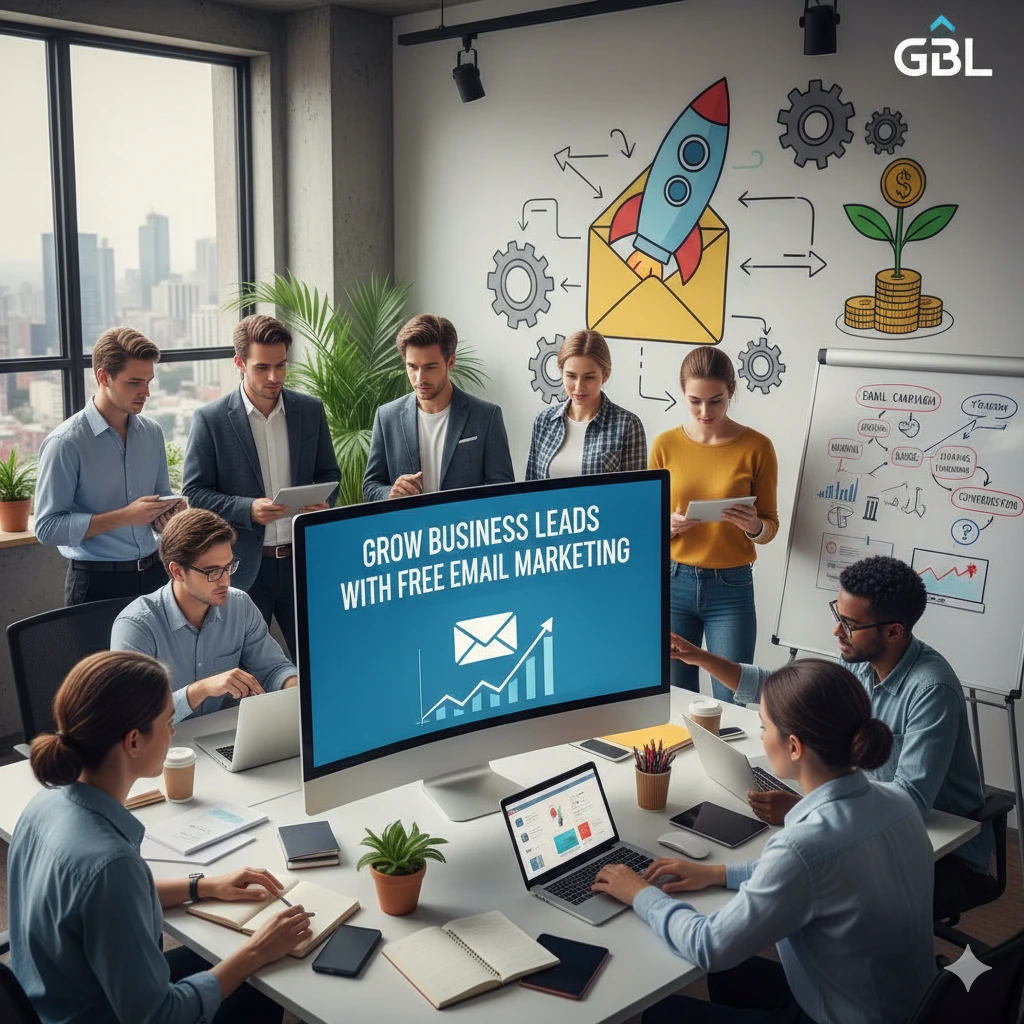
Converting subscribers into business leads requires strategy, not just volume.
Build Targeted Lead Lists
Quality matters more than quantity. If you’re doing B2B outreach, use free tools like LinkedIn Sales Navigator’s free trial or ChatGPT to build targeted prospect lists. You can literally ask ChatGPT: “Find me a list of 10 emails of real estate brokers in San Diego, California that work at Compass,” and it will scrape the internet for you. For ongoing list building, tools like Instantly.ai‘s SuperSearch allow filtering by job title, company size, industry, location, hiring status, and more. The key is targeting the right people, not just any people.
Verify Before You Send
Never send emails to unverified addresses. Free email verification tools like NeverBounce, Kickbox, or the verification features built into platforms like Instantly ensure you’re only sending to valid, deliverable addresses. This protects your sender reputation and improves your overall deliverability. A small investment here (or using free verification quotas) saves massive deliverability problems later.
Implement Lead Scoring
Lead scoring helps you identify and prioritize contacts with high conversion potential. Assign points based on specific behaviors: opening emails (+5 points), clicking links (+10 points), downloading resources (+15 points), visiting pricing pages (+20 points). Contacts above a certain threshold become “hot leads” worthy of direct sales outreach. This automation ensures you spend time on prospects most likely to convert.
Nurture with Educational Content
Not every subscriber is ready to buy immediately. Create automated nurture sequences that educate prospects about their problems and your solutions over time. Share case studies, customer success
stories, industry insights, how-to guides, and thought leadership content. The goal is building trust and establishing expertise so that when they’re ready to buy, you’re the obvious choice.
Focus on Permission and Trust
Never, ever buy email lists. Purchased lists yield terrible ROI, harm your sender reputation with high bounces and spam complaints, and violate privacy regulations like GDPR and CAN-SPAM. Instead, grow organically through opt-ins. The quality of a smaller, permission-based list beats a large cold list every time. Every subscriber should have explicitly agreed to receive your emails.
Conclusion
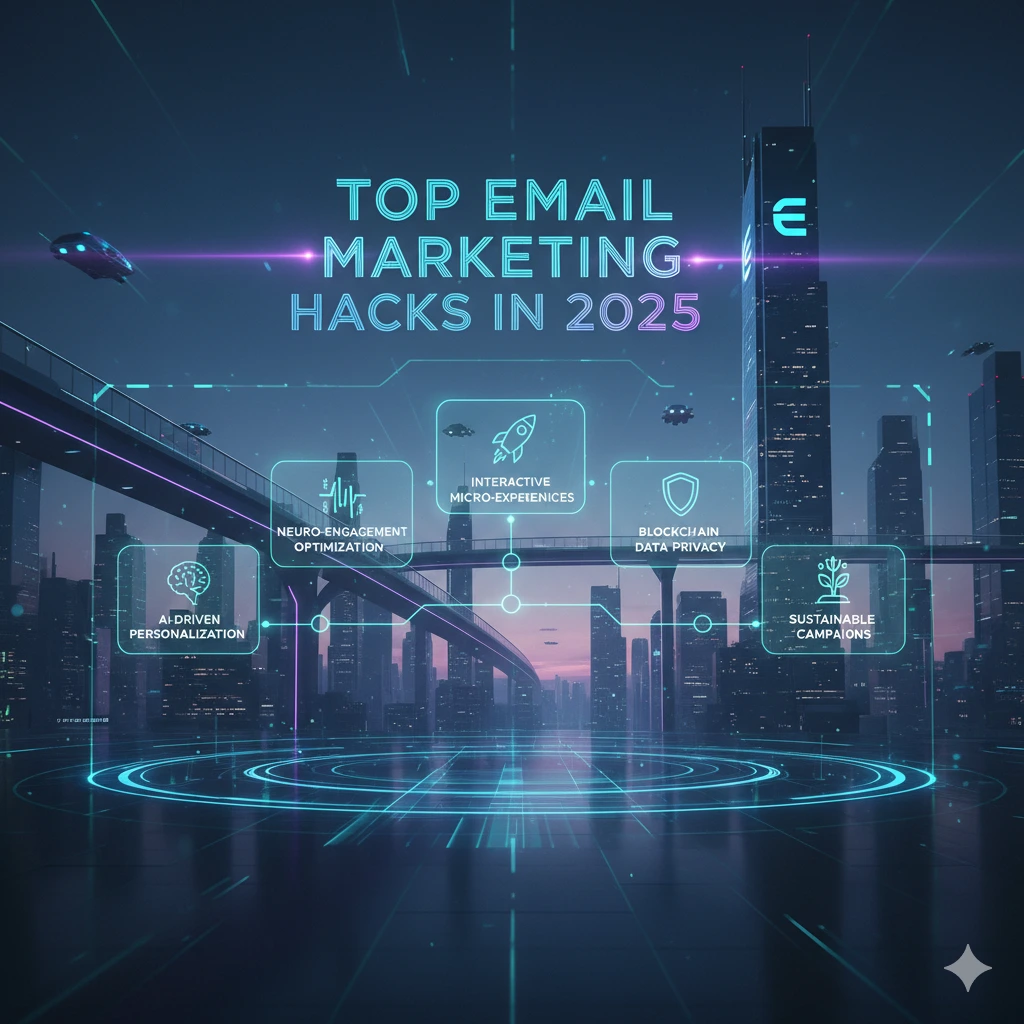
Email marketing in 2025 isn’t about tricks or shortcuts—it’s about building trust, maintaining consistency, and delivering genuine value. The hacks covered in this guide give you a complete framework: deliverability strategies ensure your emails reach inboxes, list-building tactics grow your audience without spending money, design and personalization make your messages compelling, copywriting techniques drive responses, automation saves time while increasing effectiveness, analytics help you continuously improve, and free tools make it all accessible regardless of budget.
Start by implementing just 2-3 of these strategies this week. Set up your email authentication records. Create one compelling lead magnet. Write and automate a 3-email welcome sequence. Start A/B testing your subject lines. Clean your email list and remove bounced addresses. The businesses seeing massive success with email marketing in 2025 aren’t doing anything magical—they’re simply implementing these fundamental strategies consistently.
Remember that email marketing generates $42 for every $1 spent, offers direct one-on-one communication with decision-makers, and provides predictable, scalable lead generation that compounds over time. With 4.3 billion email users worldwide, your ideal customers are checking their inboxes daily, waiting for relevant, valuable content. Give them a reason to open your emails, engage with your message, and ultimately become loyal customers.
The inbox isn’t just for communication—it’s your most powerful tool for growth. Use it wisely, implement these top email marketing hacks in 2025, and watch your business leads multiply.
FAQS
Email marketing delivers an impressive return on investment of $42 for every $1 spent, making it one of the most profitable marketing channels available. This exceptional ROI stems from email's direct access to 4.3 billion daily users worldwide, low operational costs, and ability to deliver personalized messages at scale. Businesses across all industries—from ecommerce to B2B services—consistently report email as their highest-converting channel, often outperforming social media and paid advertising in terms of actual revenue generated per dollar invested.
To avoid spam folders, implement these critical strategies: set up proper email authentication records including SPF, DKIM, and DMARC; use subdomains for bulk sending to protect your main domain reputation; maintain clean email lists by removing bounced and inactive contacts regularly; avoid spam trigger words in subject lines and keep them under 45 characters; always obtain explicit permission before sending emails; and monitor your sender reputation by keeping bounce rates under 2% and spam complaints under 0.08%. Using email verification tools before sending and implementing proper IP warming for new domains are also essential.
The top free email marketing platforms in 2025 include MailerLite (500 subscribers, 12,000 emails/month with automation), Brevo (100,000 subscribers, 9,000 emails/month with SMS and chat), Mailchimp (500 contacts, 1,000 emails/month), Sender (2,500 subscribers, 15,000 emails/month with unlimited automation), and GetResponse (500 subscribers, 2,500 emails/month with landing pages). Each platform offers drag-and-drop builders, basic automation, and analytics on their free plans, making them ideal starting points for businesses building their email marketing programs without upfront investment.
Email frequency depends on your audience, offering, and engagement levels, but most successful brands send between 1-4 emails per week. B2B companies typically send 2-4 times monthly, while ecommerce brands may send 2-3 times weekly during promotions. The key is monitoring engagement metrics—if open rates drop or unsubscribe rates increase, you're sending too frequently. Start conservatively with weekly emails, then test different frequencies by segmenting your list and tracking performance. Always provide preference centers where subscribers can choose their desired frequency to reduce unsubscribes while maintaining engagement.
Focus on these essential metrics: open rates (aim for 35-50%), click-through rates (target 5-10%), conversion rates (percentage completing desired actions like purchases), bounce rates (keep under 2%), spam complaint rates (under 0.08%), and unsubscribe rates (under 1%). Beyond these, track revenue per email, list growth rate, engagement over time, and email forwarding/sharing rates. The most important metric is ultimately ROI—how much revenue your campaigns
generate compared to costs. Use your email platform's built-in analytics to monitor these KPIs and identify opportunities for optimization.
Never buy email lists. Purchased lists damage sender reputation with high bounce and spam complaint rates, violate privacy regulations like GDPR and CAN-SPAM, yield terrible engagement and conversion rates, and destroy trust with recipients who never opted in. Instead, build your list organically through website signup forms, lead magnets (free guides, checklists, discounts), social media promotions, content upgrades, webinar registrations, and in-store signups. Permission based lists with 1,000 engaged subscribers consistently outperform purchased lists of 100,000 cold contacts in terms of deliverability, engagement, and revenue generation.
Grow your list organically by creating irresistible lead magnets (ebooks, checklists, templates, webinars, discount codes) that provide immediate value; adding signup forms on every high-traffic webpage including homepage, blog posts, and checkout pages; promoting opt-ins across social media with clear value propositions; using exit-intent popups to capture leaving visitors; including email signup CTAs in your email signature; creating quizzes or assessments that require emails for results; and leveraging QR codes in physical locations. Collaborate with complementary brands for co-marketing opportunities and always clearly communicate what subscribers will receive when they sign up.
Effective subject lines in 2025 are human, curiosity-driven, and concise (1-3 words or under 50 characters). Top performing formulas include personalization with first names ("[First Name]..."), curiosity-driven phrases ("Quick thought," "Strange question," "This surprised me"), benefit-focused statements ("Save 30% today"), and urgency without pressure ("Last chance," "Ends tonight"). Avoid spam triggers like excessive caps, multiple exclamation marks, or "free money" language. A/B test every subject line variation to identify what resonates with your specific audience. The goal is making emails feel like personal messages, not marketing blasts.
A hard bounce occurs when an email permanently fails to deliver due to invalid email addresses, deleted accounts, or non existent domains. These contacts should be immediately removed from your list as they'll never receive emails and damage your sender reputation. A soft bounce is a temporary delivery failure caused by full inboxes, server downtime, email size issues, or temporary technical problems. Soft bounces may resolve on their own, but if an address soft bounces 3-5 times consecutively, treat it as a hard bounce and remove it. Maintaining bounce rates under 2% is critical for deliverability.
Advanced personalization in 2025 goes far beyond basic name insertion. Segment based on behavior (purchase history, browsing patterns, email engagement), send product recommendations matching past purchases or interests, reference specific actions ("We noticed you viewed our running shoes"), personalize send times based on when each subscriber typically opens emails, use dynamic content blocks that change based on subscriber data, collect zero-party data through signup forms (1-2 questions about preferences), and create behavior-triggered emails (abandoned cart, post-purchase
follow-ups, re-engagement for inactive users). True personalization makes every subscriber feel the email was crafted specifically for them.
Email segmentation divides your subscriber list into targeted groups based on shared characteristics like demographics, behavior, purchase history, engagement level, or interests. Instead of sending identical messages to everyone, segmentation allows you to tailor content, offers, and messaging to each group's specific needs. For example, an ecommerce store might segment by: frequent buyers (VIP offers), cart abandoners (recovery sequences), window shoppers (educational content), and inactive subscribers (re-engagement campaigns). Segmented campaigns see 14-100% higher open rates and significantly better conversions compared to batch-and-blast approaches. Segmentation respects subscriber preferences and delivers more relevant experiences.
Email automation workflows are pre-built sequences triggered by specific subscriber actions or time intervals. Common workflows include welcome series (3-5 emails introducing new subscribers to your brand), abandoned cart recovery (reminding shoppers to complete purchases), post-purchase sequences (order confirmation, shipping updates, review requests), birthday/anniversary emails (with special offers), and re-engagement campaigns (for inactive subscribers). To set them up, use your email platform's automation features to define triggers (signup, purchase, date), create email content for each step, set time delays between emails, and establish exit conditions. Once built, workflows run automatically, nurturing leads while you focus on other tasks.
Optimal send times vary by audience and industry, but general best practices suggest Tuesday through Thursday between 9-11 AM performs best for B2B audiences, while consumer audiences often engage more during early evenings (5-8 PM) and weekends. However, these are starting points—the only way to know your ideal send time is through testing. Split your list and send identical emails at different times, then compare performance metrics. Consider time zones if your audience is geographically dispersed. Many email platforms offer send-time optimization features that automatically deliver emails when each individual subscriber is most likely to engage based on their historical behavior.
Reduce unsubscribes by setting clear expectations at signup (tell them what content to expect and how often), segmenting your list so subscribers only receive relevant content, providing preference centers where they can adjust frequency or content types rather than fully unsubscribing, consistently delivering promised value in every email, avoiding excessive sending frequency, personalizing content based on behavior and interests, ensuring mobile optimization (50%+ of emails are opened on mobile), and periodically reminding subscribers why they joined and what benefits they receive. A 1% or lower unsubscribe rate is healthy—if yours exceeds this, audit your strategy immediately.
A/B testing (split testing) compares two versions of an email to determine which performs better. Send version A to half your list and version B to the other half, then measure which achieves higher open rates, clicks, or conversions. Test one
element at a time for clear results: subject lines (easiest and highest impact), sender names (personal name vs. company name), email copy length (short vs. detailed), CTA placement (above fold vs. bottom), CTA text ("Buy now" vs. "Shop the sale"), images vs. text-heavy, send times, and personalization approaches. Focus especially on A/B testing your welcome email—it has the highest engagement, so small improvements compound significantly.
Email deliverability encompasses multiple factors beyond spam avoidance. Maintain a strong sender reputation by consistently sending to engaged subscribers; implement proper authentication (SPF, DKIM, DMARC records); use dedicated IP addresses for high-volume sending and warm them properly; monitor your blacklist status regularly; maintain email list hygiene by removing hard bounces and inactive users; engage in consistent sending patterns rather than sporadic blasts; follow unsubscribe requests immediately; use recognizable "from" names and email addresses; and monitor engagement metrics closely. Partner with reputable email service providers with strong deliverability infrastructure. Deliverability directly impacts ROI—emails that don't reach inboxes generate zero revenue.
Create automated re-engagement campaigns targeting subscribers who haven't opened emails in 30-90 days. Send a sequence of 2-3 emails with compelling subject lines like "We miss you," "Are you still interested?" or "Last chance to stay connected". Offer incentives (exclusive discounts, special content) to win them back. Ask directly what content they'd prefer to receive. Use different subject lines and send times than your regular campaigns. If subscribers don't engage with your re engagement sequence, remove them from your active list to protect deliverability. Some platforms allow moving them to a "dormant" segment for occasional reaching out without hurting active campaign metrics. A healthy list with 1,000 engaged subscribers beats a bloated list with 10,000 inactive contacts.
The CAN-SPAM Act is U.S. legislation regulating commercial email. To comply, you must include accurate "from" information (name and email address), use non-deceptive subject lines that accurately reflect email content, identify messages as advertisements if they're promotional, include your valid physical postal address (even if just a P.O. Box), provide clear and conspicuous unsubscribe mechanisms in every email, honor unsubscribe requests within 10 business days, and monitor what others are doing on your behalf (if using third parties). Violations can result in penalties up to $46,517 per email. Similar regulations exist globally (GDPR in Europe, CASL in Canada), so research requirements for your specific markets.
Generate quality leads through email by creating targeted lead magnets that solve specific problems for your ideal customers; using lead scoring to identify high-intent prospects based on engagement behaviors (link clicks, content downloads, pricing page visits); nurturing leads with educational content sequences that build trust before making sales pitches; segmenting by buyer journey stage and sending appropriate content for each phase; implementing clear CTAs that move prospects to the next step (not always asking for meetings immediately); offering valuable free resources first to build reciprocity; following up quickly with engaged leads (within 24 hours); and tracking which email campaigns drive the most
qualified leads to refine your approach. Quality trumps quantity—100 highly targeted, engaged leads convert better than 10,000 cold prospects.
The top email marketing trends shaping 2025 include AI-powered personalization using machine learning to predict optimal content, send times, and offers for each subscriber; interactive AMP emails with embedded forms, surveys, carts, and calendars that let users take action without leaving their inbox; hyper-personalization beyond names to include behavioral triggers, preferences, and predictive recommendations; mobile-first design as 50%+ of emails are opened on smartphones; privacy-first marketing focusing on zero-party data and transparent data usage; automated workflows handling nurture sequences, re-engagement, and lifecycle marketing; and integration with other channels for omnichannel experiences. The brands seeing the biggest wins are those combining automation with authentic, personalized communication that respects subscriber preferences and delivers consistent value.
Share this post :
Newsletter
Add Your Heading Text Here
Lorem ipsum dolor sit amet, consectetur adipiscing elit. Ut elit tellus, luctus nec ullamcorper mattis, pulvinar dapibus leo.
